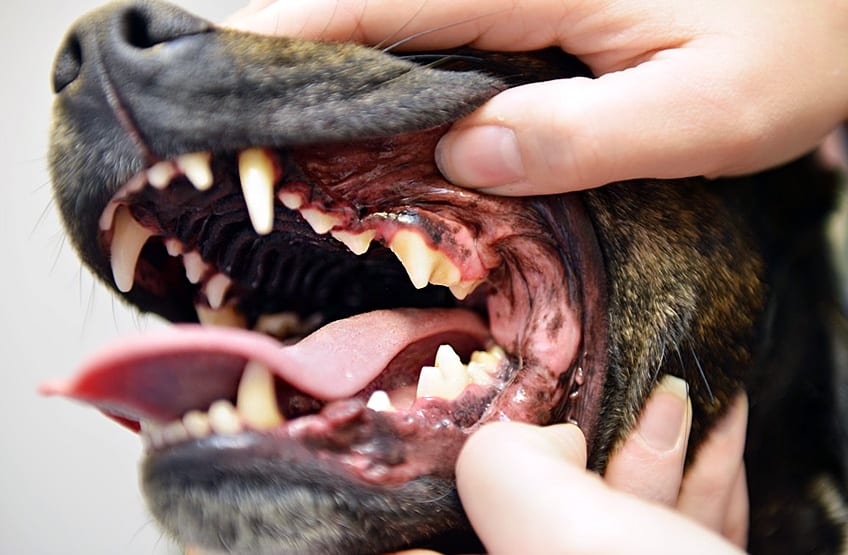Think about how many times a day you brush your own teeth, and then compare this with how many times a day you brush your pet’s teeth. Imagine what your teeth would be like after a few months or even years without brushing!
Signs of poor dental hygiene in dogs
There are some signs that could indicate a problem with your dog’s dental health. These include:
- Bad breath
- Bleeding gums
- Discolouration of teeth
- Difficulty or reluctance to eat
- Pus and abscesses
- Broken teeth
- Excess salivation
It is important that these problems are dealt with as soon as possible to prevent further health issues.
Guide to dog dental care
Without doubt the most effective way to look after your dog’s teeth is to brush them. This is the best way to prevent tartar build-up and subsequent painful dental disease in your pet. Of course, your pet may be reluctant to having their teeth brushed at first. It normally takes about 3 weeks for them to get used to brushing, sometimes a little longer, but it’s worth it in the long run. If your pet already has a build up of tartar on their teeth, brushing alone won't be enough, they will require a dental scale & polish first.
Brushing your pet’s teeth is an integral part of a good pet dental care regime. Start off by getting some toothpaste specially made for pets – never use toothpaste made for humans as these are not designed to be swallowed and are toxic to dogs. For one week allow your pet to come to you and lick the paste off your finger. Once your pet is used to this, try gently rubbing the paste around their gums and when they are relaxed about it continue this method for 7-10 days. The next step is to put some of the paste on to a pet toothbrush and let them lick it off.
They might be suspicious of the brush at first so if they walk away be patient and try again the next day. After a few days you’ll find your dog will lick the paste off the brush. Allow them to do this for a few days before you attempt to put the brush in their mouths while they are licking off the paste. After another week your pet should be coming to you to remind you that it’s time for brushing! When brushing your pet’s teeth you should aim to gently brush the outside surfaces of all the teeth to remove plaque.
Dental health checks for dogs
We would recommend an oral health for your pet check every 6-12 months. Dental disease is progressive; it won’t go away without help so will only get worse. That is why taking preventative measures is so important. Contact your local Calder Vets branch to book a consultation where we will be able to give tailored advice for your pet.



Our Services